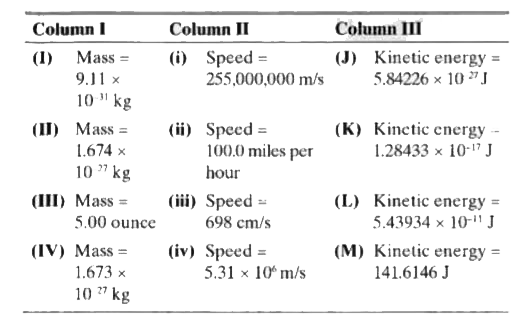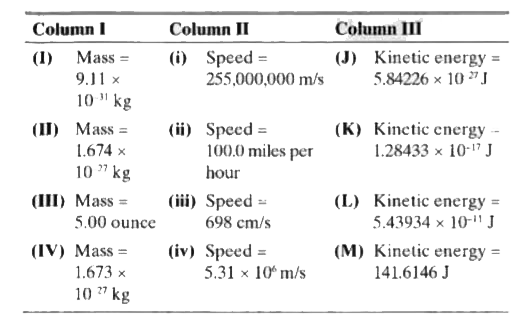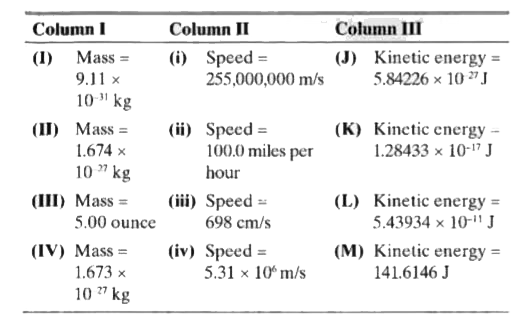Explain the term ‘wave particle duality’ of matter
Step-by-Step Solution:
1. Definition of Wave-Particle Duality:
Wave-particle duality is a fundamental concept in quantum mechanics that describes how matter and light exhibit both wave-like and particle-like properties. This means that entities such as electrons, photons, and even larger particles can behave as either particles or waves depending on the experimental conditions.
2. Historical Context:
The concept emerged from experiments that showed light can behave like a wave (interference and diffraction patterns) and also like a particle (photoelectric effect). Similarly, matter, traditionally viewed as particles, also exhibits wave-like behavior.
3. De Broglie's Hypothesis:
Louis de Broglie proposed that every moving particle or object has an associated wavelength. This is given by the de Broglie wavelength formula:
λ=hmv
where λ is the wavelength, h is Planck's constant, m is the mass of the particle, and v is its velocity.
4. Implications of the Formula:
The de Broglie wavelength indicates that as the mass or velocity of a particle increases, its wavelength decreases. For macroscopic objects (like a ball), the wavelength is so small that wave-like behavior is not observable. However, for microscopic particles (like electrons), the wavelength can be significant, allowing wave-like behavior to be observed.
5. Observations in Different Scales:
In the macroscopic world, we typically observe matter as particles because their wave properties are negligible. In contrast, in the microscopic realm (atomic and subatomic levels), wave-particle duality is crucial for understanding phenomena like electron diffraction and quantum mechanics.
6. Conclusion:
Wave-particle duality illustrates that matter cannot be fully described as just particles or waves; rather, it encompasses both aspects. This duality is essential for explaining various physical phenomena and is a cornerstone of modern physics.
---
Wave-particle duality is a fundamental concept in quantum mechanics that describes how matter and light exhibit both wave-like and particle-like properties. This means that entities such as electrons, photons, and even larger particles can behave as either particles or waves depending on the experimental conditions.
The concept emerged from experiments that showed light can behave like a wave (interference and diffraction patterns) and also like a particle (photoelectric effect). Similarly, matter, traditionally viewed as particles, also exhibits wave-like behavior.
Louis de Broglie proposed that every moving particle or object has an associated wavelength. This is given by the de Broglie wavelength formula:
λ=hmv
where λ is the wavelength, h is Planck's constant, m is the mass of the particle, and v is its velocity.
The de Broglie wavelength indicates that as the mass or velocity of a particle increases, its wavelength decreases. For macroscopic objects (like a ball), the wavelength is so small that wave-like behavior is not observable. However, for microscopic particles (like electrons), the wavelength can be significant, allowing wave-like behavior to be observed.
In the macroscopic world, we typically observe matter as particles because their wave properties are negligible. In contrast, in the microscopic realm (atomic and subatomic levels), wave-particle duality is crucial for understanding phenomena like electron diffraction and quantum mechanics.
Wave-particle duality illustrates that matter cannot be fully described as just particles or waves; rather, it encompasses both aspects. This duality is essential for explaining various physical phenomena and is a cornerstone of modern physics.
Topper's Solved these Questions
- QUESTION BANK 2021BOOK - NAVNEET PUBLICATION - MAHARASHTRA BOARDCHAPTER - QUESTION BANK 2021EXERCISE - Dual Nature Of Radiation And Matter. ( Short Answer II (SA2) ( 3 MARKS Each ) )
6 Videos
- QUESTION BANK 2021BOOK - NAVNEET PUBLICATION - MAHARASHTRA BOARDCHAPTER - QUESTION BANK 2021EXERCISE - Dual Nature Of Radiation And Matter. (Long Answer ( LA) ( 4 marks Each) )
3 Videos
- QUESTION BANK 2021BOOK - NAVNEET PUBLICATION - MAHARASHTRA BOARDCHAPTER - QUESTION BANK 2021EXERCISE - Dual Nature Of Radiation And Matter. (Very Short Answer (VSA) ( 1 MARK Each ) )
7 Videos
- MULTIPLE CHOICE QUESTIONSBOOK - NAVNEET PUBLICATION - MAHARASHTRA BOARDCHAPTER - MULTIPLE CHOICE QUESTIONSEXERCISE - Communication Systems
6 Videos
- SHORT ANSWER QUESTIONSBOOK - NAVNEET PUBLICATION - MAHARASHTRA BOARDCHAPTER - SHORT ANSWER QUESTIONSEXERCISE - Assignments
3 Videos
Similar Questions
Knowledge Check
Heisenberg's uncertainty principle is the direct consequence of
(i) wave nature of radiation
(ii) wave-particle dualoty of radiation
(iii) particle nature of matter
(iv) wave-particle duality of matterA(i)B(iii)C(ii)D(ii),(iv)Matter waves are
ATransverse wavesBLongitudinal wavesCde Broglie waveDElectromagnetic wavesMatter waves are:
Aelectromagnetic wavesBmechanical wavesCeither mechanical or electromagnetic wavesDneither mechanical nor electromagnetic waves
CHARACTERISTICS OF PARTICLES OF MATTER
View SolutionWhat are the characteristics of the particles of matter?
View Solutionde-Broglie equation gives the relation between particle and wave nature of the matter. In the given table, Column I shows the mass of the matter, Column II shows the speed of the matter and column III shows the kinetic energy of matter.

What are the conditions for a proton with a wavelength at 1.55×10−15m?
View Solutionde-Broglie equation gives the relation between particle and wave nature of the matter. In the given table, Column I shows the mass of the matter, Column II shows the speed of the matter and column III shows the kinetic energy of matter.

What are the conditions for hydrogen ion with a wavelength at 1.50×10−7m ?
View Solutionde-Broglie equation gives the relation between particle and wave nature of the matter. In the given table, Column I shows the mass of the matter, Column II shows the speed of the matter and column III shows the kinetic energy of matter.

What are the conditions for an electron with a wavelength at 1.37Å?
View Solution
